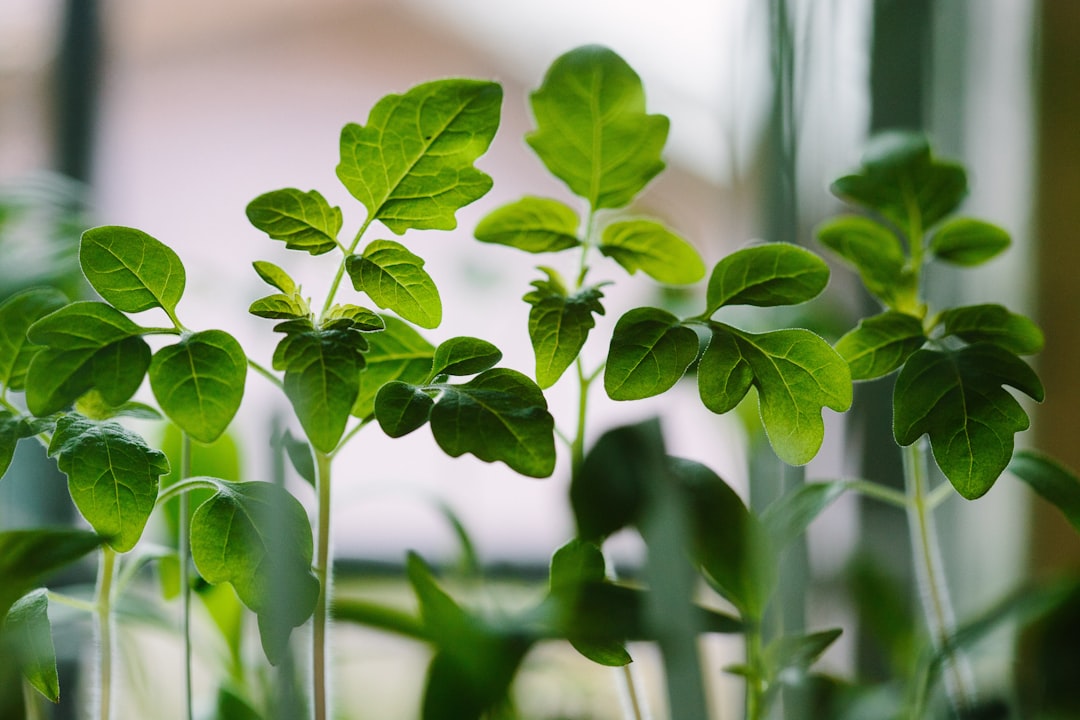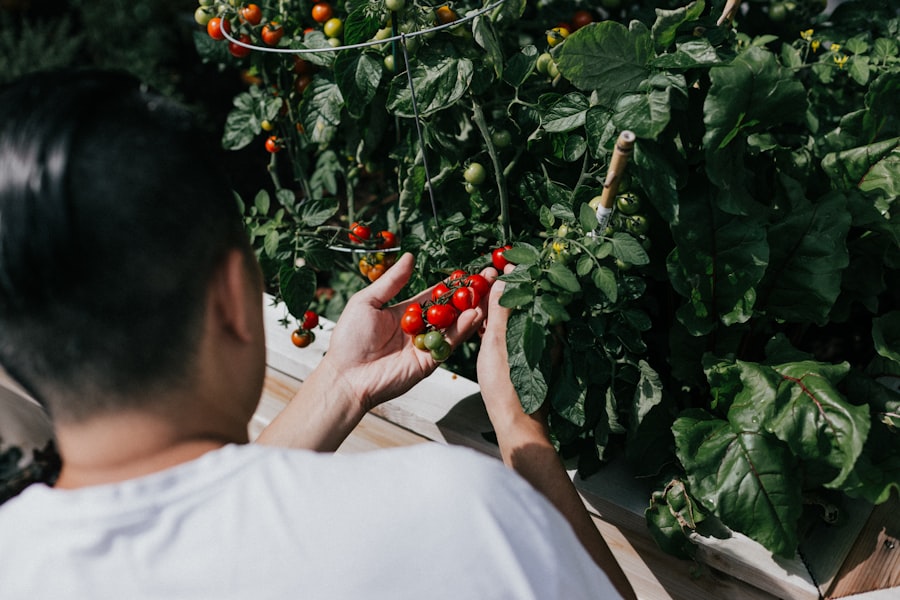Troubleshooting Yellow Leaves on Tomato Plants

Tomato plants are a staple in many home gardens and are prized for their delicious fruits. However, one common problem that tomato plant owners often encounter is yellowing leaves. Yellow leaves can be a sign of various issues, including nutrient deficiencies, environmental factors, and pest or disease problems. Understanding the causes and symptoms of yellowing leaves is crucial for maintaining the health and productivity of tomato plants.
Understanding the Common Causes of Yellow Leaves on Tomato Plants
1. Lack of sunlight: Tomato plants require at least six to eight hours of direct sunlight each day to thrive. If they do not receive enough sunlight, their leaves may turn yellow. This can be remedied by ensuring that the plants are placed in a sunny location or by using artificial lighting if growing indoors.
2. Overwatering or underwatering: Tomato plants need consistent moisture, but overwatering or underwatering can lead to yellowing leaves. Overwatering can cause root rot and nutrient deficiencies, while underwatering can result in dehydration and nutrient imbalances. It is important to water tomato plants deeply and evenly, allowing the soil to dry out slightly between waterings.
3. Poor soil quality: The quality of the soil plays a significant role in the health of tomato plants. If the soil lacks essential nutrients or has a pH imbalance, it can lead to yellowing leaves. Conducting a soil test can help determine if any amendments are needed to improve the soil quality.
4. Temperature stress: Tomato plants are sensitive to extreme temperatures, both hot and cold. High temperatures can cause the leaves to wilt and turn yellow, while cold temperatures can lead to leaf discoloration and stunted growth. Providing shade during hot weather and protecting plants from frost or cold snaps can help prevent temperature-related yellowing.
Identifying the Symptoms of Yellowing Leaves on Tomato Plants
1. Yellowing of leaves: The most obvious symptom of yellowing leaves is the yellow coloration itself. The leaves may turn completely yellow or develop yellow spots or streaks.
2. Brown spots or patches: In addition to yellowing, tomato plant leaves may develop brown spots or patches. These can be a sign of nutrient deficiencies, fungal diseases, or pest infestations.
3. Curling or wilting leaves: Yellowing leaves may also exhibit curling or wilting. This can be a result of water stress, nutrient imbalances, or pest and disease issues.
4. Stunted growth: Another symptom of yellowing leaves is stunted growth. If the plant is not receiving the necessary nutrients or is being affected by pests or diseases, it may not grow as vigorously as it should.
The Role of Nutrient Deficiencies in Yellowing Leaves on Tomato Plants
| Nutrient | Function | Deficiency Symptoms |
|---|---|---|
| Nitrogen | Essential for plant growth and development | Yellowing of older leaves, stunted growth |
| Phosphorus | Important for root development and energy transfer | Purple or dark green leaves, stunted growth |
| Potassium | Regulates water balance and helps with stress tolerance | Yellowing of leaf margins, curling of leaves |
| Calcium | Important for cell wall development and structure | Yellowing and necrosis of new leaves, stunted growth |
| Magnesium | Essential for chlorophyll production and photosynthesis | Yellowing between leaf veins, stunted growth |
| Sulfur | Important for protein synthesis and enzyme activity | Yellowing of new leaves, stunted growth |
| Iron | Essential for chlorophyll production and photosynthesis | Yellowing of new leaves, stunted growth |
1. Lack of nitrogen, phosphorus, or potassium: Nitrogen, phosphorus, and potassium are essential nutrients for tomato plants. A deficiency in any of these nutrients can cause yellowing leaves. Nitrogen deficiency often results in overall yellowing of older leaves, while phosphorus deficiency leads to purple or bronze discoloration. Potassium deficiency can cause yellowing and browning of leaf edges.
2. Other micronutrient deficiencies: In addition to the macronutrients mentioned above, tomato plants also require various micronutrients for optimal growth. Deficiencies in micronutrients such as iron, magnesium, and zinc can manifest as yellowing leaves.
Environmental Factors that Can Cause Yellowing Leaves on Tomato Plants
1. Extreme temperatures: As mentioned earlier, extreme temperatures can stress tomato plants and cause their leaves to turn yellow. High temperatures can lead to heat stress, while cold temperatures can result in cold stress.
2. Humidity: Tomato plants prefer moderate humidity levels. High humidity can create a favorable environment for fungal diseases, which can cause yellowing leaves.
3. Wind: Strong winds can damage tomato plants and cause their leaves to yellow. Wind can also increase water evaporation, leading to dehydration and nutrient imbalances.
Pest and Disease Issues that May Cause Yellowing Leaves on Tomato Plants

1. Aphids: Aphids are small insects that feed on the sap of tomato plants. Their feeding can cause yellowing leaves, distorted growth, and the presence of sticky honeydew.
2. Whiteflies: Whiteflies are another common pest that can infest tomato plants. They suck sap from the leaves, causing yellowing, wilting, and stunted growth.
3. Fungal diseases: Various fungal diseases, such as early blight and septoria leaf spot, can affect tomato plants and cause yellowing leaves. These diseases often start as small spots or patches that eventually turn yellow or brown.
How to Prevent Yellowing Leaves on Tomato Plants
1. Proper planting techniques: Start by selecting healthy seedlings or seeds from reputable sources. Plant them in well-draining soil enriched with organic matter. Provide adequate spacing between plants to promote air circulation.
2. Regular maintenance and care: Regularly inspect tomato plants for signs of pests, diseases, or nutrient deficiencies. Remove any affected leaves or branches promptly to prevent the spread of problems. Mulch around the base of the plants to conserve moisture and suppress weed growth.
3. Use of organic fertilizers and pest control methods: Avoid overusing synthetic fertilizers, as they can lead to nutrient imbalances and environmental pollution. Instead, opt for organic fertilizers that provide a balanced nutrient profile. Use natural pest control methods, such as introducing beneficial insects or using insecticidal soaps.
Steps to Take to Treat Yellowing Leaves on Tomato Plants
1. Identify the cause of yellowing leaves: Before taking any action, it is important to identify the underlying cause of yellowing leaves. This can be done by examining the symptoms, conducting a soil test, or seeking professional help if needed.
2. Adjust watering and fertilization: If the yellowing is due to overwatering or underwatering, adjust the watering schedule accordingly. If nutrient deficiencies are the cause, apply the appropriate organic fertilizers or soil amendments.
3. Use natural pest control methods: If pests are causing the yellowing, use natural pest control methods to eliminate them. This can include introducing beneficial insects, using insecticidal soaps, or practicing companion planting.
4. Prune affected leaves and branches: If the yellowing is localized to certain leaves or branches, prune them to prevent the spread of diseases or pests. Be sure to disinfect pruning tools between cuts to avoid cross-contamination.
The Importance of Proper Watering and Fertilization for Tomato Plants
1. Importance of balanced nutrients: Tomato plants require a balanced supply of nutrients for optimal growth and productivity. Providing the right amount of nitrogen, phosphorus, potassium, and micronutrients is crucial for preventing yellowing leaves.
2. Proper watering techniques: Watering tomato plants deeply and evenly is essential for their health. Avoid overwatering, as it can lead to root rot and nutrient deficiencies. On the other hand, underwatering can cause dehydration and nutrient imbalances. Monitor the moisture levels in the soil and adjust watering accordingly.
Tips for Maintaining Healthy Tomato Plants and Preventing Yellowing Leaves
1. Regular pruning and maintenance: Regularly prune tomato plants to remove any dead or diseased leaves or branches. This helps improve air circulation and prevents the spread of diseases. Remove any weeds that compete with the plants for nutrients and water.
2. Use of natural pest control methods: Instead of relying on synthetic pesticides, use natural pest control methods to protect tomato plants from pests. This includes introducing beneficial insects, using insecticidal soaps, or practicing companion planting.
3. Proper watering and fertilization: Follow proper watering and fertilization techniques to ensure that tomato plants receive the necessary nutrients and moisture. Monitor the soil moisture levels and adjust watering accordingly. Apply organic fertilizers or soil amendments to provide a balanced nutrient profile.
When to Seek Professional Help for Yellowing Leaves on Tomato Plants
1. Severe or persistent yellowing: If the yellowing of leaves is severe or persists despite home remedies, it may be necessary to seek professional help. A plant specialist or agricultural extension agent can provide guidance and recommendations.
2. Signs of disease or pest infestation: If the yellowing is accompanied by other signs of disease or pest infestation, it is important to seek professional help. They can accurately diagnose the problem and recommend appropriate treatments.
3. Lack of improvement with home remedies: If home remedies do not improve the condition of the tomato plants, it may be necessary to consult a professional. They can provide more advanced treatments or interventions to address the underlying cause of yellowing leaves.
Yellowing leaves on tomato plants can be a cause for concern, as they indicate underlying issues that can affect the health and productivity of the plants. By understanding the common causes and symptoms of yellowing leaves, gardeners can take proactive measures to prevent and treat this problem. Proper planting techniques, regular maintenance and care, and the use of organic fertilizers and pest control methods are key to maintaining healthy tomato plants. By taking action and addressing yellowing leaves promptly, gardeners can ensure the success of their tomato plants and enjoy a bountiful harvest.



